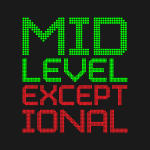Explaining the Escrow System
A much less discussed CBA issue related to how players receive their compensation is the escrow system. But what exactly is the escrow system and what purpose does it serve?
The escrow system is in place as an attempt to ensure that player salaries and benefits do not exceed their guaranteed share of Basketball Related Income (BRI). This all stems from the systemic issue where player contracts are negotiated and agreed upon before the actual BRI figure is certain, and thus the players’ guaranteed share is known. So how does the escrow system combat this uncertainty? To give the league a reasonable margin of error in estimating BRI, 10% of players’ salary is withheld and deposited into an escrow account. Once the season is complete, the league compares the players’ share of BRI versus the amount they were actually compensated. If the players were paid more pre-escrow than they were guaranteed then overage amount is returned to the teams from the escrow account. The players receive the remainder of what’s in the account, which I imagine is comparable to finding $20 in your pocket that you forgot about… Must be nice.
Where does the escrow money go?
So far, what do we have? When players receive more than their guaranteed share of BRI, the league reconciles the situation by collecting money from the escrow account. But where does that money go?
The money collected from the escrow account by the league generally goes to one of two places – it is either distributed among teams or used for “league purposes.” The only caveat is that the escrow money to be distributed must be given to all teams in equal shares.
Any escrow money not distributed to teams will then be used for “league purposes.” This is a catch-all term that essentially means the money may be used for any purpose the league decides, including marketing, administration, development, etc.
What if the overage is greater than the escrow account?
In short, players will never lose more than the 10% of their salary that is withheld in the escrow account. If the overage is greater than the 10% then teams may dip into the benefits pool to cover the shortfall in BRI, which amounts to 1% of BRI. If at this point the shortfall is still not covered, then tough luck for the owners. No more money will be taken from the players’ paychecks, and the players will have earned more than their fair share that season.
The league is smart, though. If such an overage happens the league has the flexibility to reduce the cap and tax levels for the following season to prevent another overage. If there is ever a situation where the players end up earning more than their guaranteed share due to a substantial drop in league revenues, then the hope is that both sides will negotiate in good faith to revise the CBA to address the issue.
With all that said, an overage greater than the 10% escrow account is rare and should be very avoidable if league revenues continue growing. The table below breaks down the actual figures for BRI, the players’ guaranteed share, how that all trickles down into the escrow account, and later the amount distributed to players for the 2011-12 and 2012-13 seasons.
What do you guys think of the current escrow system? Good as-is or room for improvement? Drop a comment and let us know!
Sources: http://www.cbafaq.com


